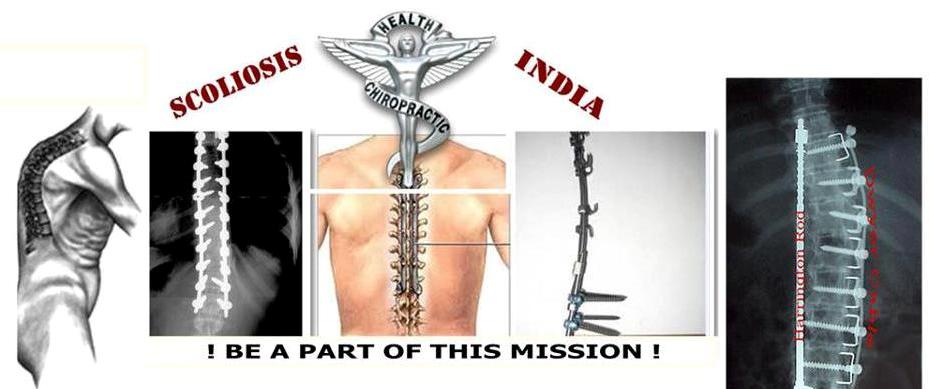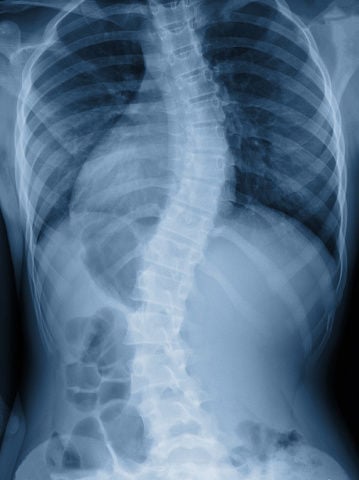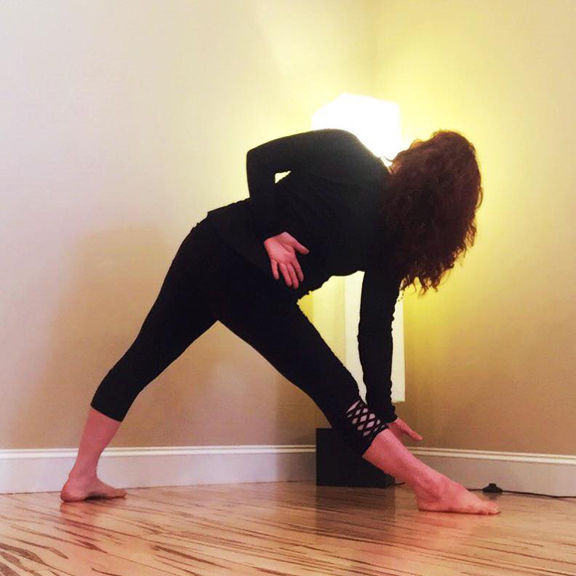The world of professional dance is both artistic and physically grueling.
Imagine taking on that challenge while living with what can often be a crippling condition.
At one time she had trouble even walking. But now she is dancing on the international stage. And this eloquent and elegant young lady is doing what she believes she was born to do and she's living her life-long dream.
You may have seen her visually dazzling Intel spots during the Super Bowl or the Grammys. But what you may not know is that this amazing artist lives here in Chicago and she was diagnosed with scoliosis at the age of 12.
"I remember going to the doctor and him taking an x-ray of my spine and telling me that there was a curve and that the best alternative would be surgery. And the way they described that was two metal rods would be put in my back and that just terrified me as a 12-year-old," says Paige Fraiser.
Paige has been dancing since she was four. After the diagnosis, she was afraid her dreams of a life in the dance world would be over. But back in New York she and her parents decided against the surgery opting instead for chiropractic treatments and a more holistic approach.
"So in high school, I wore a back brace which was plastic and it went from here to here and that just reminded me of my posture and everything but with scoliosis, it's not curable, unless you get the surgery, which isn't always guaranteed," she says.
She says she was lucky enough to work with a dance teacher who was also living with the condition who taught Paige how to control her body. She learned to dance again.
"What helps me is seeing some of my other co-workers do it and then taking a minute to process it and not saying 'Oh no, I can't do it,'" Paige says.
And the determined young lady has indeed done it very well. She eventually landed a spot with the prestigious Alvin Ailey Company before moving to Chicago to become a founding member of Visceral Dance Chicago, an innovative and groundbreaking company where Paige plays an integral part.
"It's the attitude, it's the attitude of working with it and still be able to fully be the artist that she it," says Laura Wade of Visceral Dance Chiacgo.
As for that national Intel commercial, shot in L.A., the technology company wanted to showcase people who are overcoming obstacles. Paige Fraser, dancing beautifully with a curved spine, fit that bill perfectly.
"You know, it's something I have to live with, but it's not a death sentence and I'm able to do such wonderful things with my body so I am very fortunate," Paige says.
Paige also teaches dance in Chicago and in Houston. If you'd like to see her perform in person, Visceral Dance Chicago has major show coming to the Harris Theater on April 9. Some outstanding artistic works will be presented there.
Watch her dance at : http://abc7chicago.com/society/scoliosis-is-no-barrier-for-chicago-dancer/1273365/
Harris Theater
www.visceraldance.com
Imagine taking on that challenge while living with what can often be a crippling condition.
At one time she had trouble even walking. But now she is dancing on the international stage. And this eloquent and elegant young lady is doing what she believes she was born to do and she's living her life-long dream.
You may have seen her visually dazzling Intel spots during the Super Bowl or the Grammys. But what you may not know is that this amazing artist lives here in Chicago and she was diagnosed with scoliosis at the age of 12.
"I remember going to the doctor and him taking an x-ray of my spine and telling me that there was a curve and that the best alternative would be surgery. And the way they described that was two metal rods would be put in my back and that just terrified me as a 12-year-old," says Paige Fraiser.
Paige has been dancing since she was four. After the diagnosis, she was afraid her dreams of a life in the dance world would be over. But back in New York she and her parents decided against the surgery opting instead for chiropractic treatments and a more holistic approach.
"So in high school, I wore a back brace which was plastic and it went from here to here and that just reminded me of my posture and everything but with scoliosis, it's not curable, unless you get the surgery, which isn't always guaranteed," she says.
She says she was lucky enough to work with a dance teacher who was also living with the condition who taught Paige how to control her body. She learned to dance again.
"What helps me is seeing some of my other co-workers do it and then taking a minute to process it and not saying 'Oh no, I can't do it,'" Paige says.
And the determined young lady has indeed done it very well. She eventually landed a spot with the prestigious Alvin Ailey Company before moving to Chicago to become a founding member of Visceral Dance Chicago, an innovative and groundbreaking company where Paige plays an integral part.
"It's the attitude, it's the attitude of working with it and still be able to fully be the artist that she it," says Laura Wade of Visceral Dance Chiacgo.
As for that national Intel commercial, shot in L.A., the technology company wanted to showcase people who are overcoming obstacles. Paige Fraser, dancing beautifully with a curved spine, fit that bill perfectly.
"You know, it's something I have to live with, but it's not a death sentence and I'm able to do such wonderful things with my body so I am very fortunate," Paige says.
Paige also teaches dance in Chicago and in Houston. If you'd like to see her perform in person, Visceral Dance Chicago has major show coming to the Harris Theater on April 9. Some outstanding artistic works will be presented there.
Watch her dance at : http://abc7chicago.com/society/scoliosis-is-no-barrier-for-chicago-dancer/1273365/
Harris Theater
www.visceraldance.com


